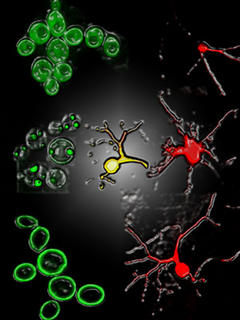The Power of Yeast

The high degree of conservation of cellular and molecular processes between the budding yeast Saccharomyces cerevisiae and higher eukaryotes have made it a valuable system for numerous studies of the basic mechanisms behind devastating illnesses such as cancer, infectious diseases, and neurodegenerative disorders. Several studies in yeast have already contributed to our basic understanding of cellular dysfunction in both Huntington’s disease and in Parkinson’s disease. Functional genomics approaches currently being undertaken in yeast will likely lead to novel insights into the genes and pathways that modulate neuronal cell dysfunction and death in these devastating diseases. In addition, the budding yeast constitutes a valuable system for identification of new drug targets, both via target-based and non-target-based drug screening. Importantly, yeast can be used as a cellular platform to analyze the cellular effects of candidate compounds, which is critical information for the development of effective therapeutics. While the molecular mechanisms that underlie neurodegeneration will ultimately have to be tested in neuronal and animal models, there are several distinct advantages to using simple model organisms to elucidate fundamental aspects of protein aggregation, amyloid toxicity, and cellular dysfunction.
